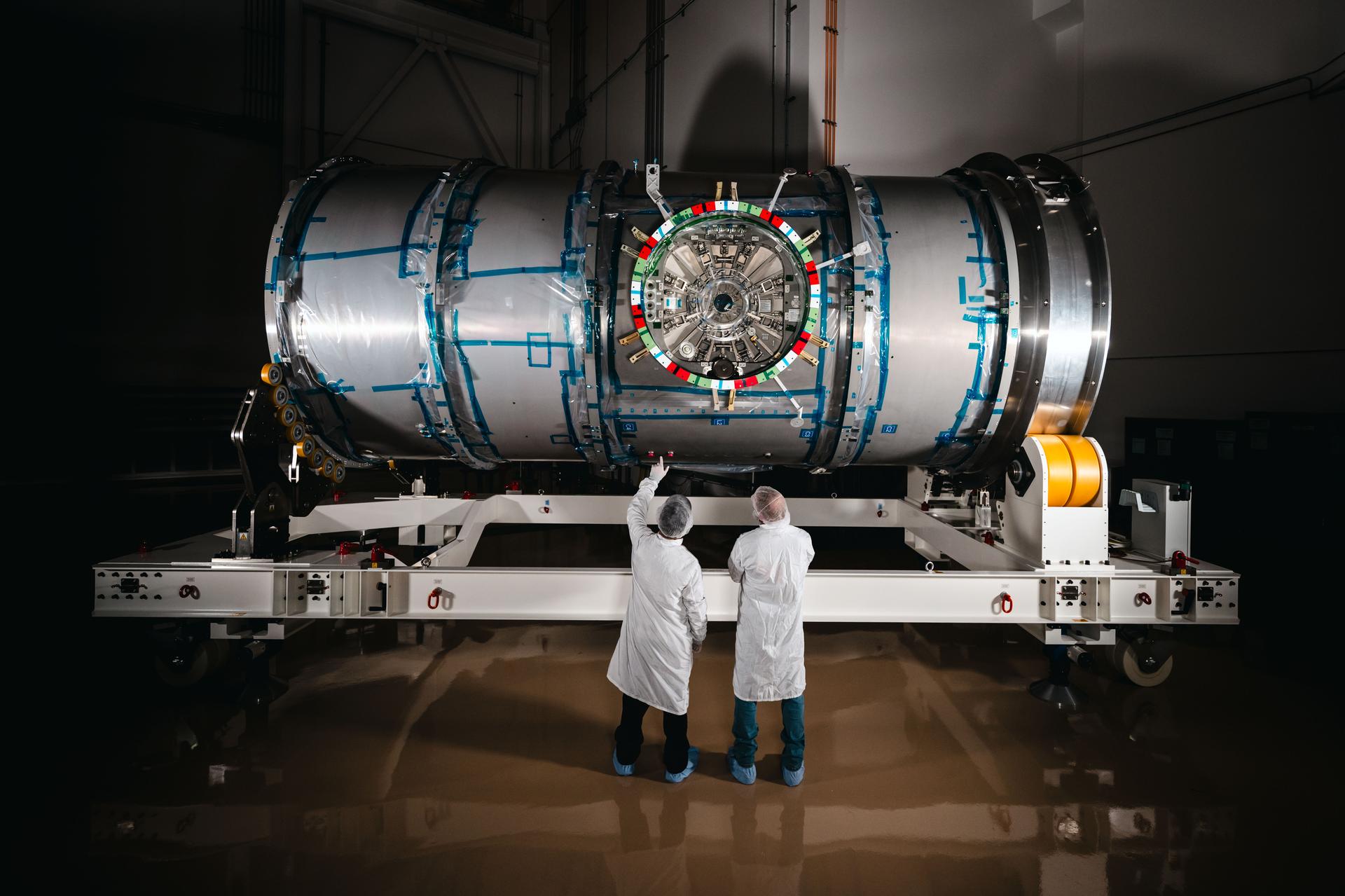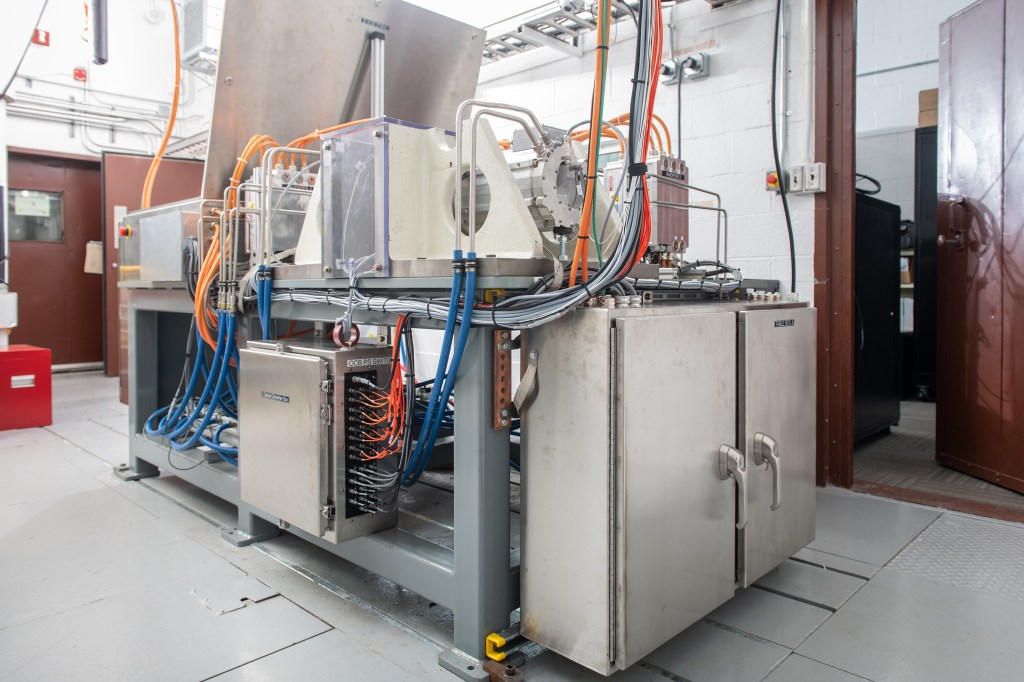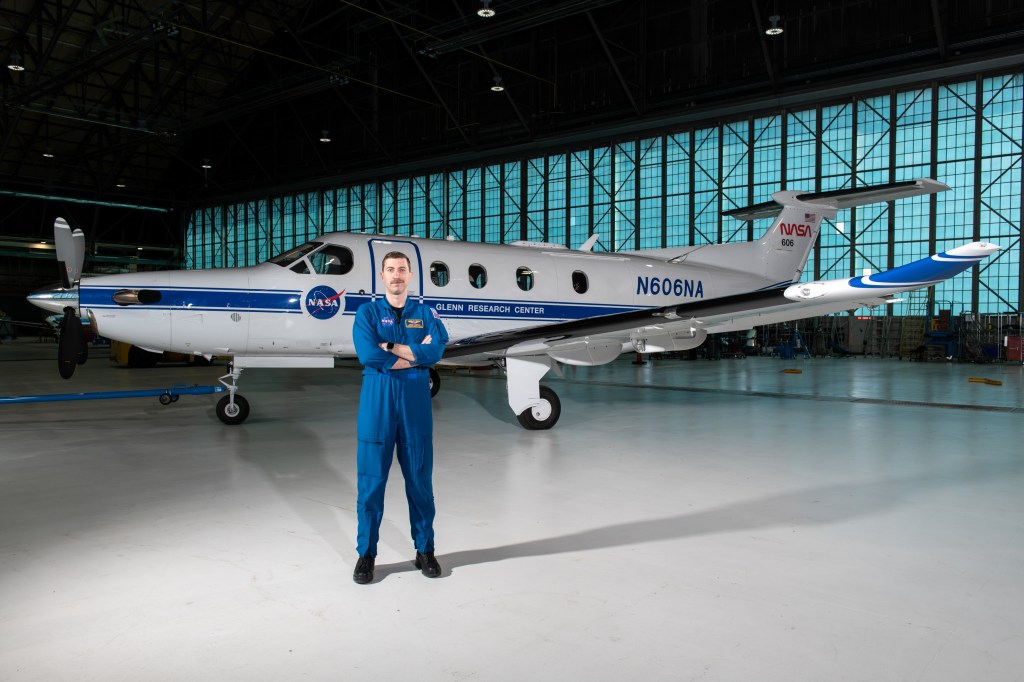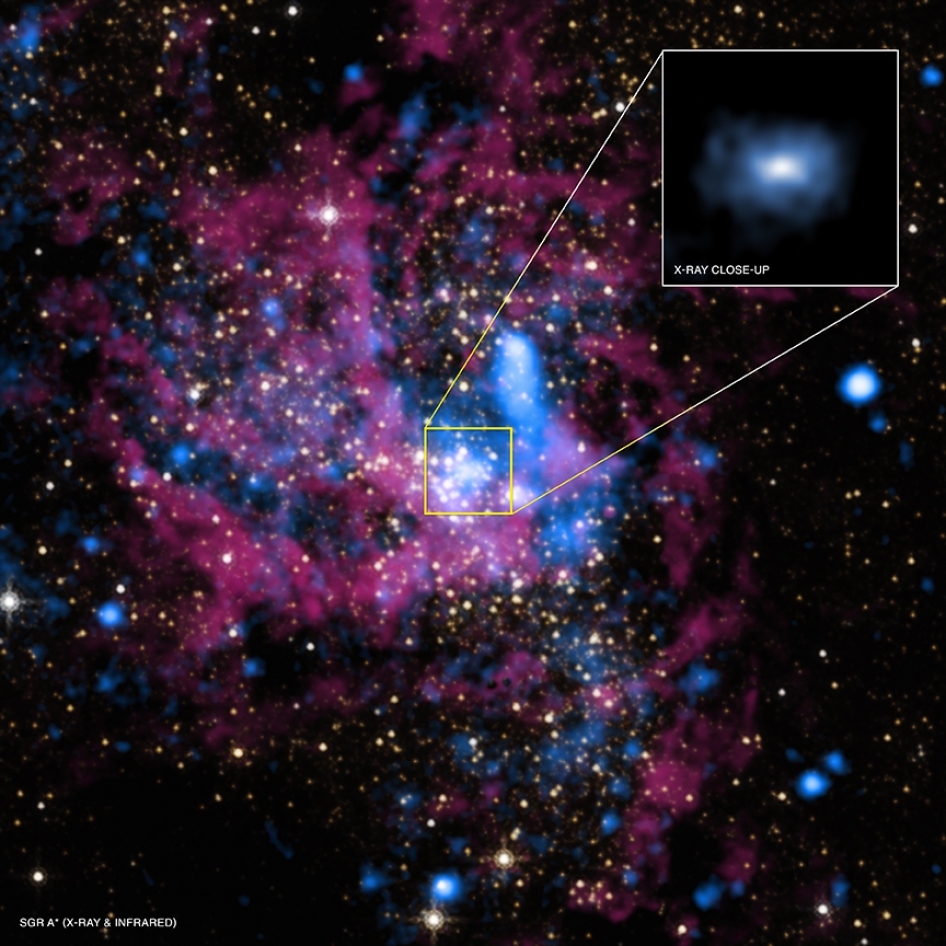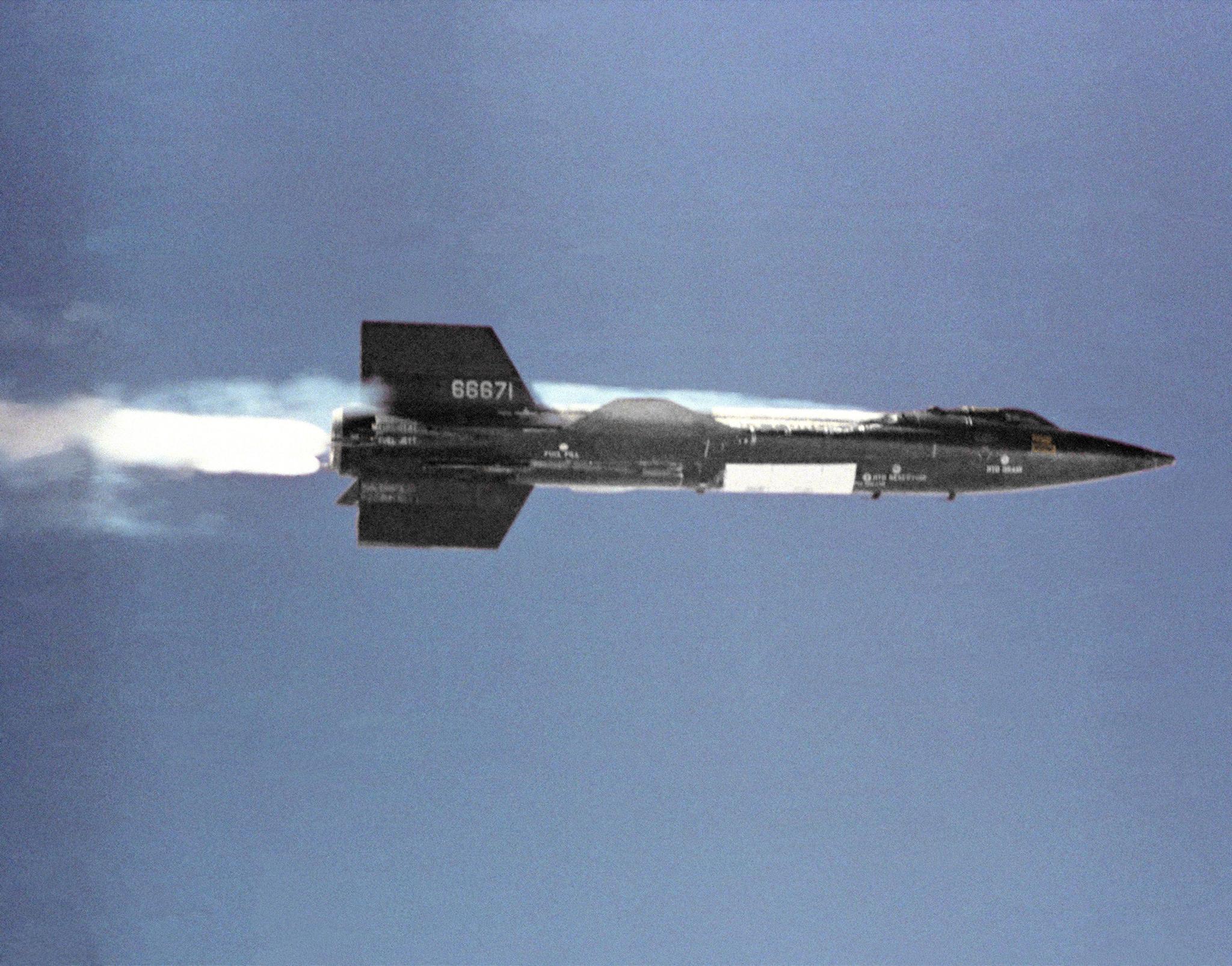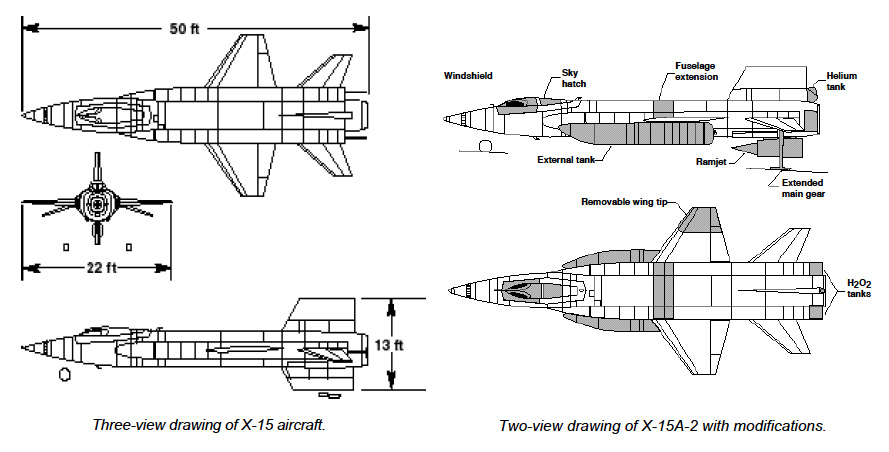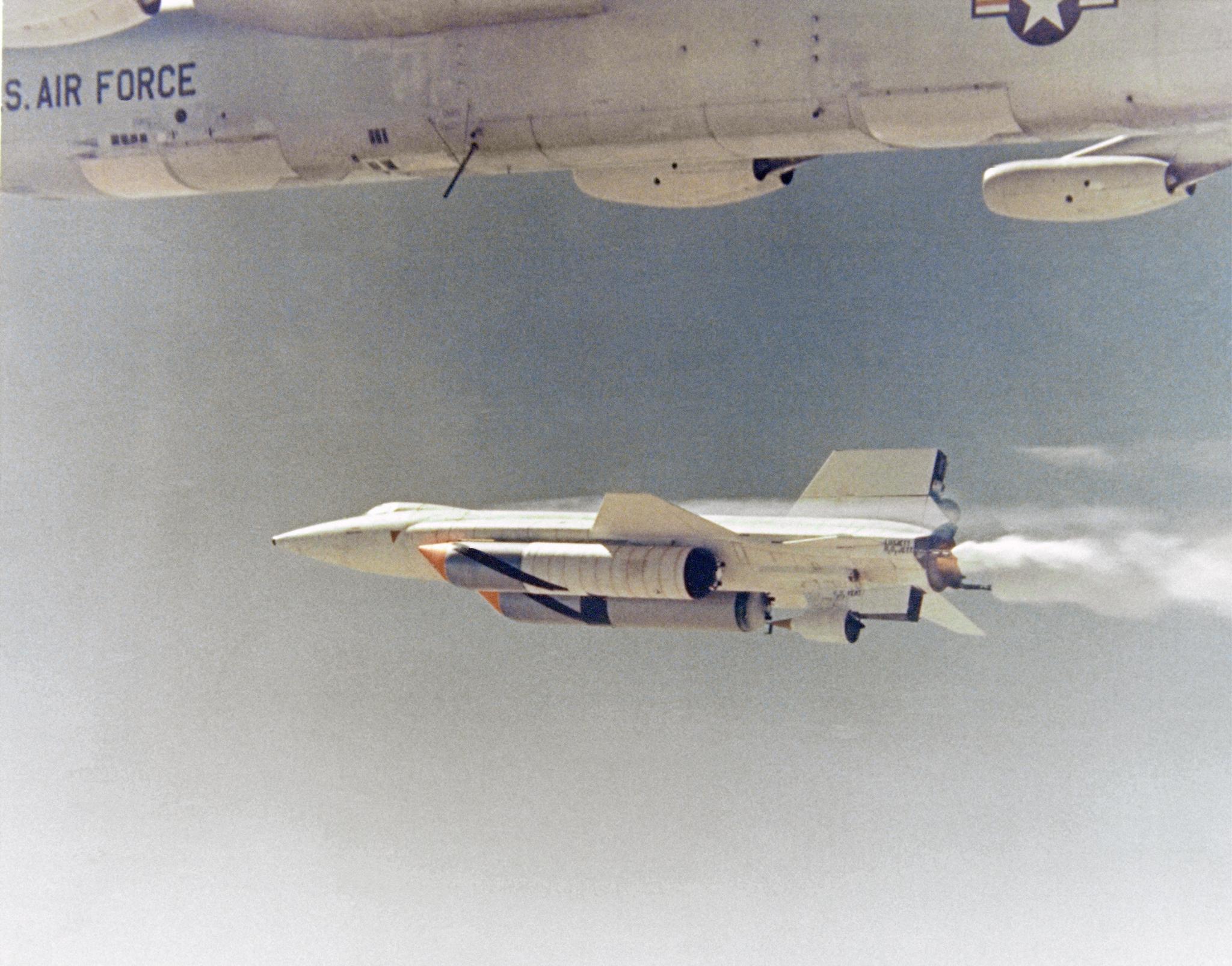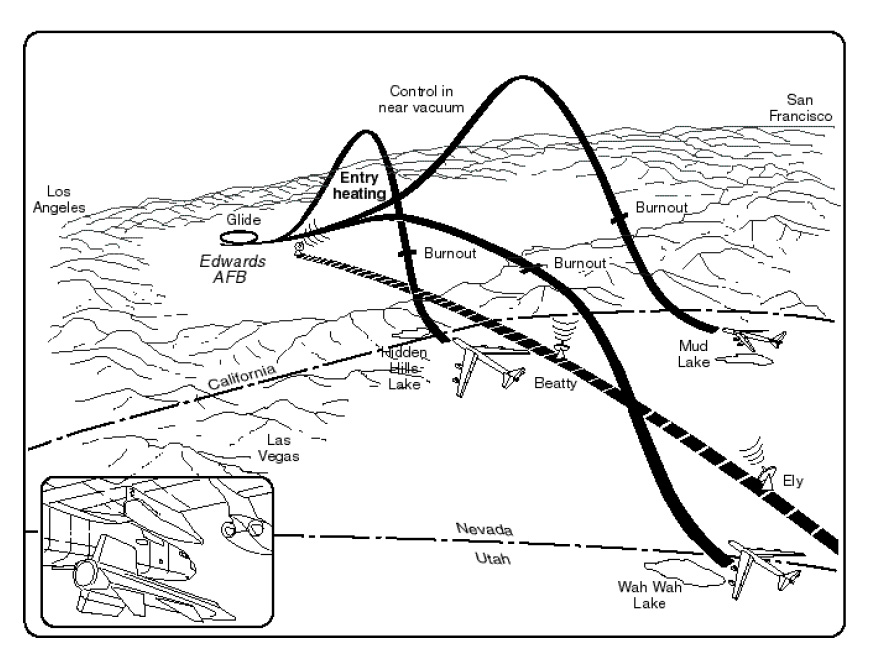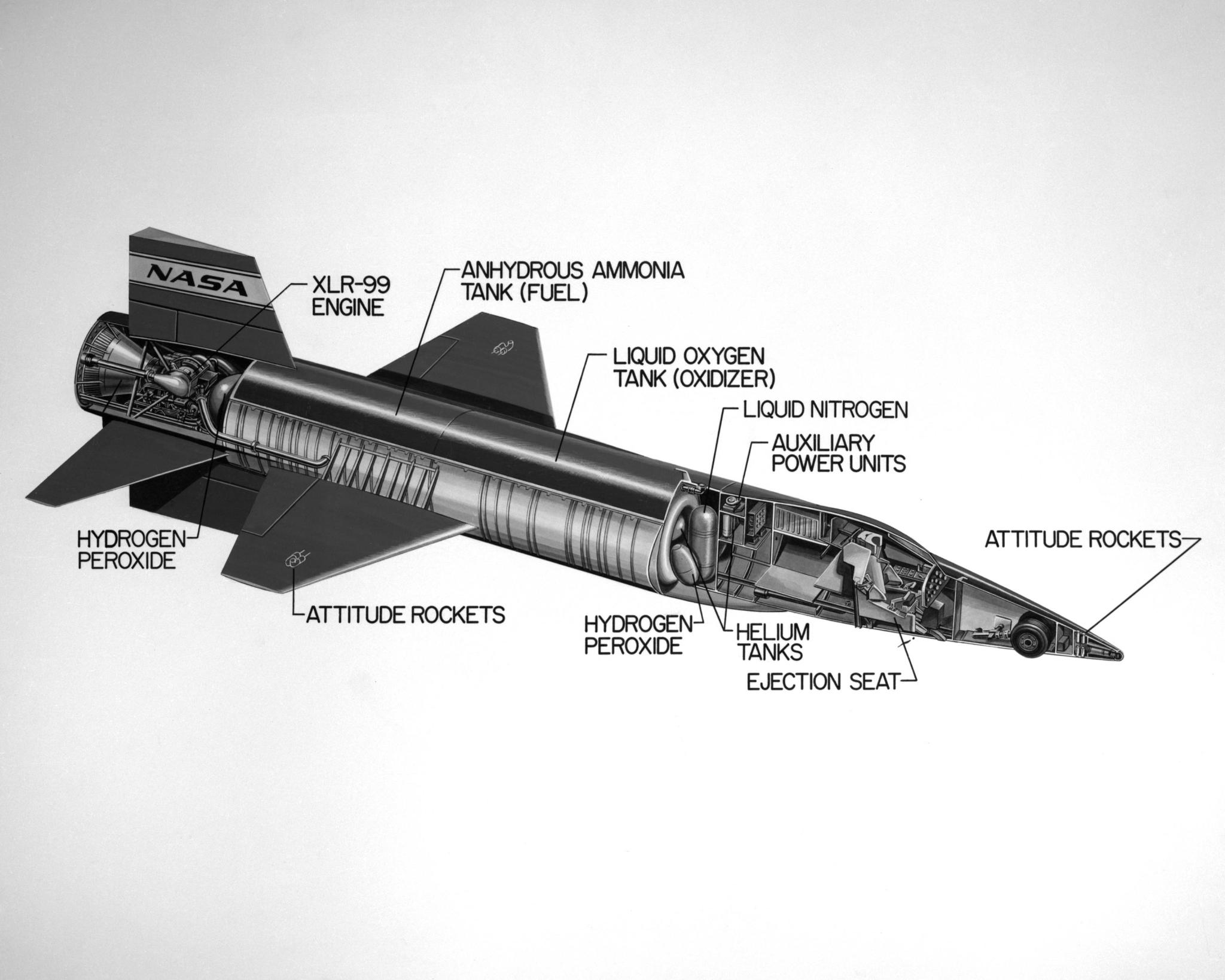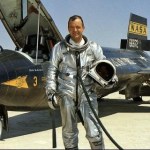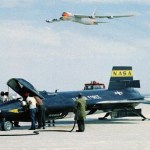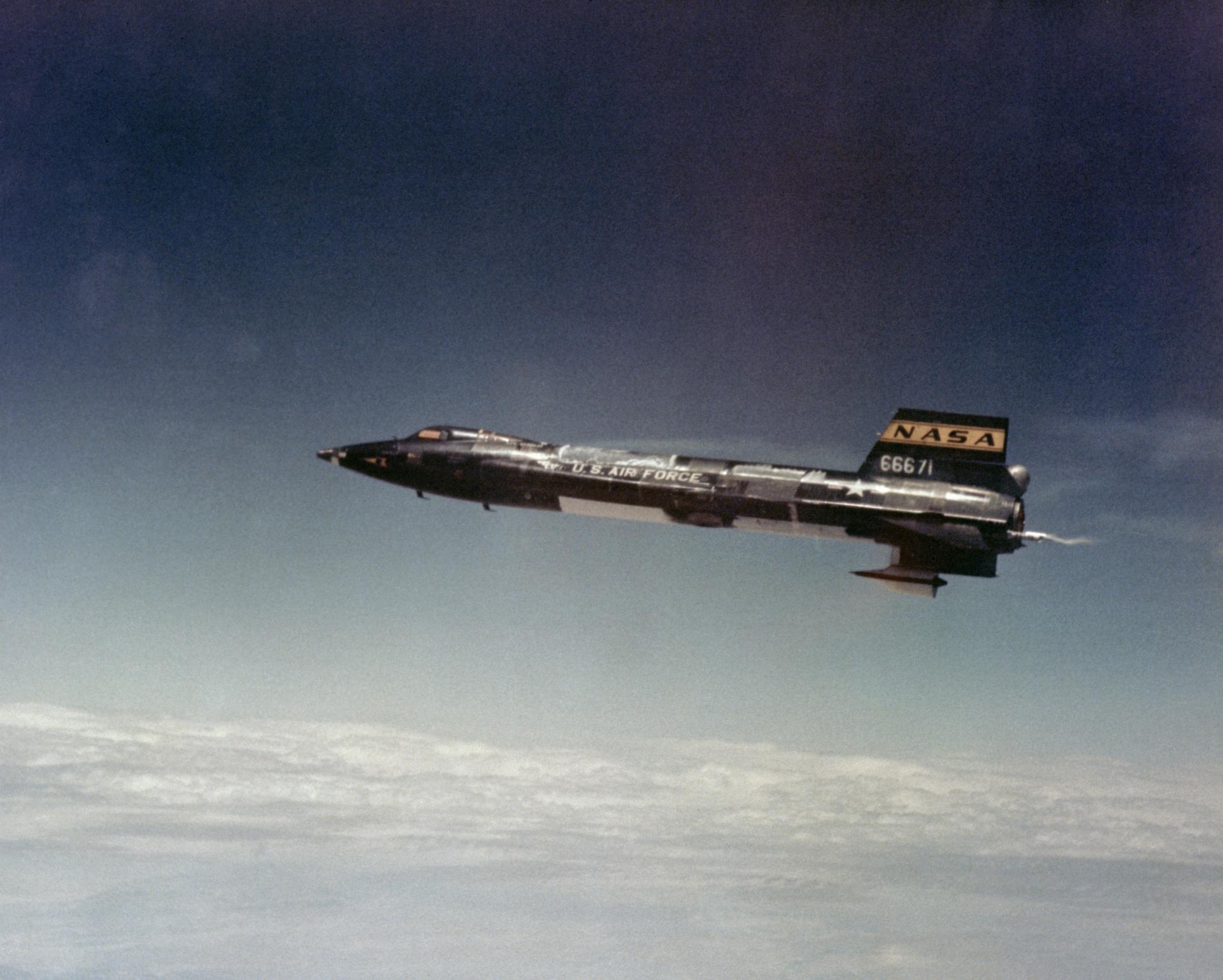X-15 Hypersonic Research Program
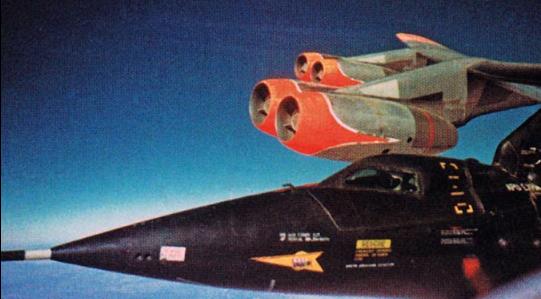
The X-15 hypersonic research program was a collaborative effort between NASA, the U.S. Air Force, the Navy, and North American Aviation Inc. It spanned nearly a decade, setting the world’s unofficial speed and altitude records — 4,520 mph (Mach 6.7) and 354,200 feet, respectively. This program investigated all aspects of piloted hypersonic flight. Data gained from the X-15 program contributed to the development of the Mercury, Gemini, and Apollo spaceflight programs, as well as the Space Shuttle program.
Aircraft and Flights
Three rocket-powered X-15 aircraft were manufactured by North American Aviation Inc. The first unpowered glide flight was conducted by Scott Crossfield, a North American test pilot and former National Advisory Committee for Aeronautics (NACA) pilot, on June 8, 1959. William H. Dana of NASA piloted the final X-15 flight on Oct. 24, 1968. All flights occurred within the “High Range,” a region primarily located east of Edwards Air Force Base and NASA’s Flight Research Center (later renamed NASA Dryden Flight Research Center).
In total, 12 pilots participated in the program: five from NASA, five from the Air Force, one from the Navy, and one from North American Aviation. Pilots generally flew one of two flight profiles: a speed profile, which maintained a level altitude until descent, and a high-altitude profile, which required a steep climb to altitude before descending.
Due to the large fuel consumption of its rocket engine, the X-15 was air-launched from a B-52 at an altitude of about 45,000 feet, reaching speeds over 500 mph. The rocket engine provided thrust for 80 to 120 seconds, after which the aircraft glided back to the landing site, usually at 200 mph. The X-15 lacked steering in its nose landing wheel, and its main landing gear had skids, so all landings were made on dry lakebeds. Rogers Dry Lake, adjacent to Edwards, was the primary landing site, though emergency landing locations were pre-designated.
Design and Development
The X-15 followed earlier X-planes, which explored flight regimes up to Mach 3.2. In 1952, NACA began preliminary research into space flight, and by 1954, the NACA’s Research Airplane Projects Panel identified the need for a new research aircraft to study hypersonic and space flight. The characteristics of what would become the X-15 were finalized and presented to the Air Force and Navy in July 1954. By December of that year, the three agencies signed a memorandum of understanding for the joint project, and in September 1955, the Air Force selected North American to develop the X-15.
The X-15 was designed as a single-seat, mid-wing monoplane to study high aerodynamic heating rates, stability and control, physiological phenomena, and other issues related to hypersonic flight (Mach 5 and above). Initially, the X-15 flew with two XLR-11 engines, producing 16,380 pounds of thrust. Later, the XLR-99 engine, capable of producing up to 57,000 pounds of thrust, was installed.
For conventional atmospheric flight, the X-15 used traditional aerodynamic controls: rudders for yaw, and horizontal tail surfaces for pitch and roll. In the thin air of space, the aircraft relied on a reaction control system — hydrogen peroxide-powered thrusters on the nose for pitch and yaw, and those on the wings for roll control.
The X-15’s outer skin was made of Inconel X, a nickel-chrome alloy designed to withstand the extreme heat generated during hypersonic flight. The cabin, made of aluminum, was insulated from the outer skin to maintain a safe temperature for the pilot.
Program History and Achievements
The first X-15 arrived at the NASA High-Speed Flight Station in early 1959, and Scott Crossfield conducted the first contractor demonstration flights. The aircraft set unofficial world speed and altitude records: 4,520 mph (Mach 6.7) on Oct. 3, 1967, piloted by Air Force pilot Pete Knight, and 354,200 feet on Aug. 22, 1963, with NASA pilot Joseph Walker at the controls.
Beyond these records, the X-15’s primary contribution was its research into hypersonic aerodynamics, structural behavior under high heating and flight loads, and pilot performance during high-speed, high-altitude flights. Data from the X-15’s missions resulted in more than 765 research reports, providing groundbreaking insights into aircraft performance, materials, stability, control, and aerodynamics.
Among its major achievements, the X-15 was the first to:
- Apply hypersonic theory and wind tunnel results to a real flight vehicle.
- Use reaction controls for attitude control in space.
- Develop a reusable superalloy structure capable of withstanding hypersonic reentry temperatures.
- Measure hypersonic skin friction directly, revealing it was lower than predicted.
- Discover that turbulent heating rates were much lower than theoretical predictions.
- Demonstrate a pilot’s ability to control a rocket-powered aerospace vehicle through atmospheric exit.
Additionally, the X-15 supported 28 experimental flights, ranging from astronomy to micrometeorite collection, and contributed to technology used in the Saturn launch vehicles of the Apollo program, which successfully transported astronauts to the moon.
The program also provided valuable physiological data. For example, the heart rates of X-15 pilots often ranged from 145 to 185 beats per minute during flight—well above the typical 70 to 80 beats per minute seen in other test aircraft. This heightened heart rate was attributed to the stress pilots experienced during pre-launch procedures. This physiological response would later become common among pilot-astronauts during their space missions.
Legacy
The X-15’s success extended beyond its individual milestones. As aerospace researcher John Becker noted, the program led to the “acquisition of new piloted aerospace flight know-how,” helping develop collaborative teams in government and industry to solve unprecedented technical challenges. The X-15’s accomplishments helped separate real challenges from theoretical issues, laying the groundwork for future space programs.
The Aircraft
The X-15 was about 50 feet in length, with a 22-foot wingspan. Its vertical tail stood 13 feet high. The lower part of the tail was jettisoned just before landing and recovered via parachute. The aircraft was powered by a throttleable XLR-99 rocket engine, providing 57,000 pounds of thrust at maximum output. Its launch weight was 31,275 pounds, which decreased to 12,295 pounds at burnout.
The X-15A-2, a modified version of the second aircraft delivered to NASA in February 1964, featured an extended fuselage to carry liquid hydrogen for a supersonic combustion ramjet. Although the ramjet was never tested, it contributed to the X-15’s Mach 6.7 flight. The X-15A-2 also had external tanks for liquid ammonia and oxygen, which provided an additional 60 seconds of engine burn.
The Pilots
The following pilots participated in the X-15 program:
- A. Scott Crossfield, North American Aviation (14 flights)
- Joseph A. Walker, NASA (25 flights)
- Robert M. White, USAF (16 flights)
- Forrest S. Petersen, U.S. Navy (5 flights)
- John B. McKay, NASA (29 flights)
- Robert A. Rushworth, USAF (34 flights)
- Neil A. Armstrong, NASA (7 flights)
- Joe H. Engle, USAF (16 flights)
- Milton O. Thompson, NASA (14 flights)
- William J. Knight, USAF (16 flights)
- William H. Dana, NASA (16 flights)
- Michael J. Adams, USAF (7 flights)
Accidents and Safety
The X-15 program had its share of accidents. The most serious occurred on Nov. 15, 1967, when Michael Adams died in a crash after his aircraft entered a spin from which he could not recover due to a failure in the adaptive flight control system. On Nov. 9, 1962, Jack McKay suffered injuries from a crash landing after engine failure, but he eventually returned to flight, though he retired early due to the injuries.
Sources
- Milton O. Thompson, At the Edge of Space: The X-15 Flight Program (Washington, DC, and London: Smithsonian Institution Press, 1992).
- Richard P. Hallion, On the Frontier: Flight Research at Dryden, 1946-1981 (Washington, DC: NASA SP-4303, 1984).
- Wendell H. Stillwell, X-15 Research Results (Washington, DC: NASA SP-60, 1965).
- John V. Becker, The X-15 Program in Retrospect, 3rd Eugen Sänger Memorial Lecture, Bonn, Germany, Dec. 4-5, 1968, copy in the NASA Dryden Historical Reference Collection.
- Kenneth W. Iliff and Mary F. Shafer, Space Shuttle Hypersonic Aerodynamic and Aerothermodynamic Flight Research and the Comparison to Ground Test Results (Washington, DC: NASA Technical Memorandum 4499, 1993).
- R. L. Schleicher, “Structural Design of the X-15,” Journal of the Royal Aeronautical Society (Oct. 1963): 618-636.
- Proceedings of the X-15 First Flight 30th Anniversary Celebration (Washington, DC: NASA Conference Publication 3105, 1991).







